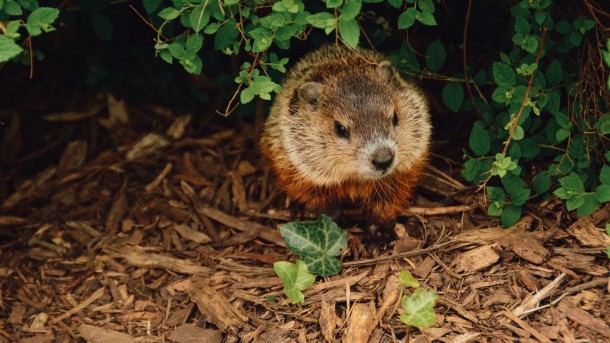Groundhogs, also widely recognized as woodchucks or whistlepigs, are fascinating creatures belonging to the marmot family. These large ground squirrels are a common sight across North America and are particularly famous for their role in Groundhog Day. But beyond their seasonal forecasting fame, a frequent question arises: How Long Do Groundhogs Live? Understanding their lifespan involves looking at factors from their natural habitat to life in captivity.
In the wild, the lifespan of a groundhog is typically shorter, averaging around two to three years. However, some groundhogs in natural environments have been known to live up to six years. This difference is often due to the numerous challenges and threats they face in their natural habitats. Predation is a significant factor; groundhogs are prey for a variety of animals, including wolves, coyotes, foxes, bobcats, lynxes, and even birds of prey and snakes. These predators significantly reduce the chances of a groundhog reaching its full potential lifespan in the wild.
 Groundhog (Marmota monax) amidst green foliage, showcasing its natural habitat and typical brown fur, relevant to discussions about groundhog lifespan.
Groundhog (Marmota monax) amidst green foliage, showcasing its natural habitat and typical brown fur, relevant to discussions about groundhog lifespan.
On the other hand, groundhogs in captivity often enjoy a significantly extended lifespan. In controlled environments, where they are protected from predators and provided with consistent food and veterinary care, groundhogs can live much longer. Reports indicate that in captivity, groundhogs can live up to 14 years. This stark contrast highlights the impact of environmental dangers on their longevity in the wild.
Several factors influence a groundhog’s lifespan, whether in the wild or captivity. Diet plays a crucial role; as vegetarians, their natural diet consists of grasses, green plants, fruits, and tree bark. In the wild, their ability to accumulate fat reserves during summer and fall is vital for surviving hibernation, which in turn impacts their overall health and lifespan. Hibernation itself is a remarkable biological process that conserves energy, allowing them to survive months without food. Their body temperature drops dramatically, and their heart and breathing rates slow down significantly, showcasing an adaptation that contributes to their survival, albeit within their natural lifespan limitations.
The Groundhog Day tradition, featuring Punxsutawney Phil, indirectly touches upon the concept of groundhog lifespan. While Punxsutawney Phil is presented as a single, perpetually forecasting groundhog, in reality, even famous groundhogs in captivity do not live for centuries. The celebration, however, keeps the groundhog in the public eye, prompting curiosity about these animals and their life cycle.
Despite facing numerous threats in the wild that shorten their lifespan, groundhogs are classified as a species of least concern. Their adaptability to various habitats, from forest edges to open fields and even dense forests, contributes to their widespread distribution across North America. However, understanding their typical lifespan of just a few years in the wild, compared to potentially over a decade in captivity, underscores the delicate balance between survival and environmental pressures in the natural world of the groundhog.

